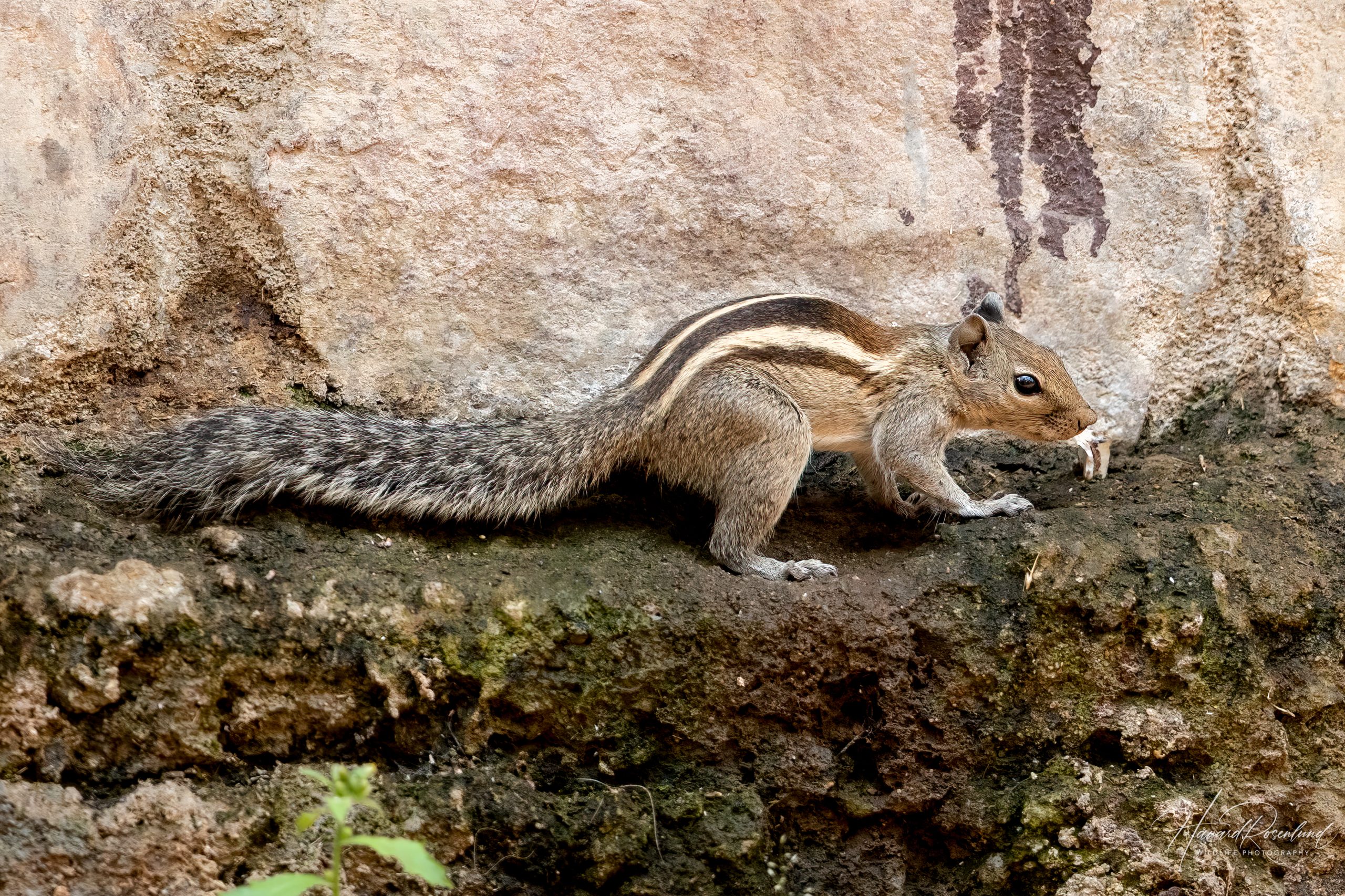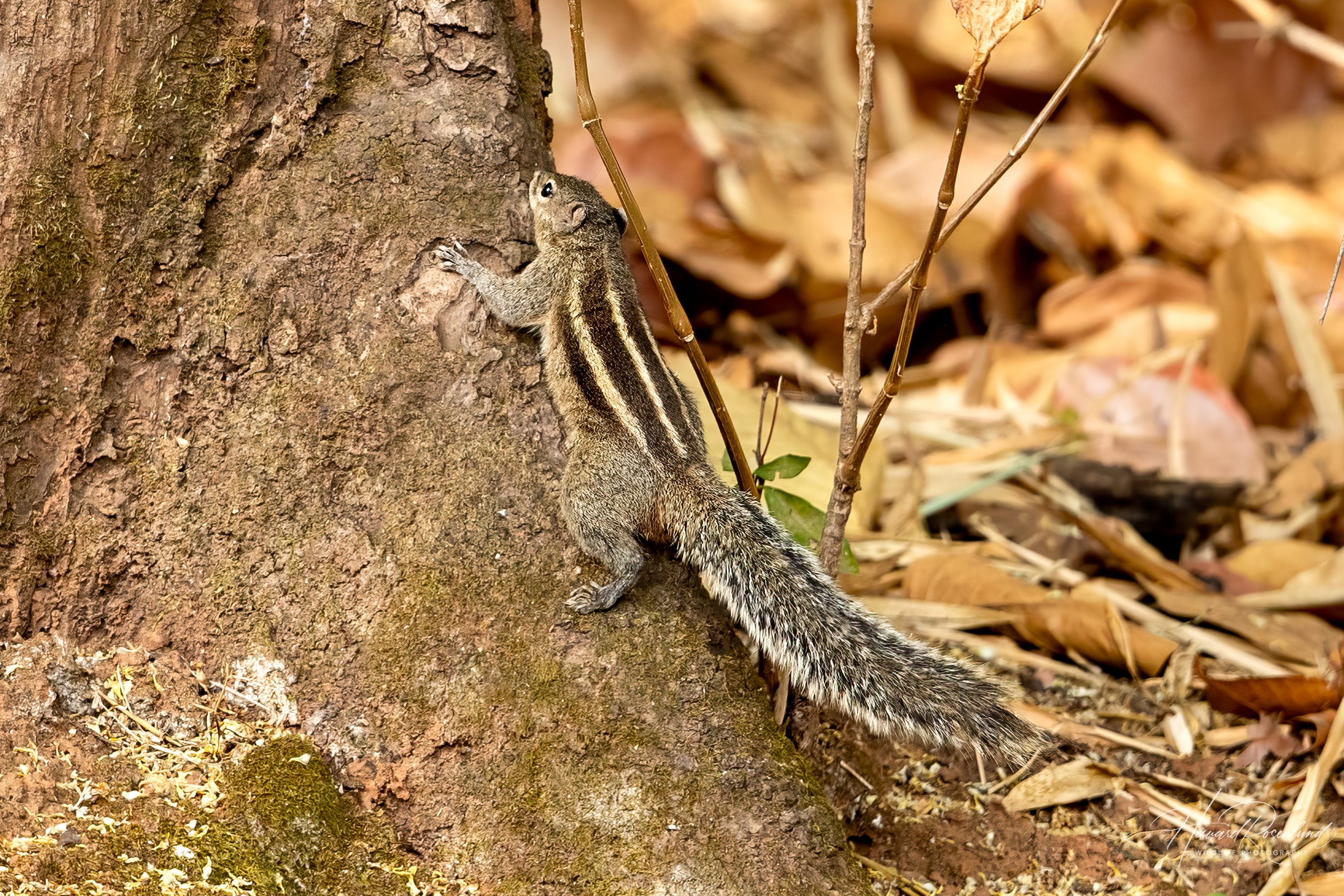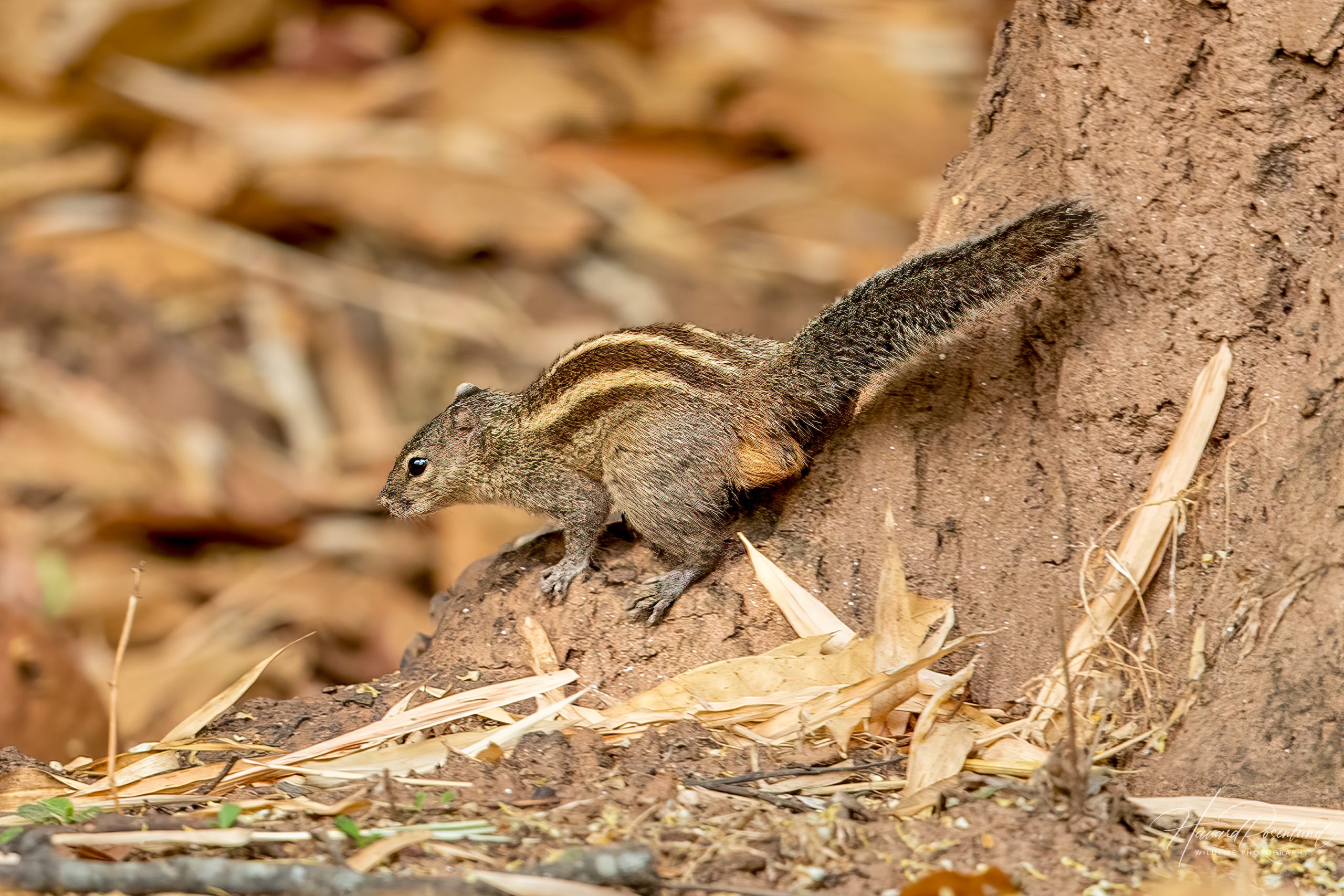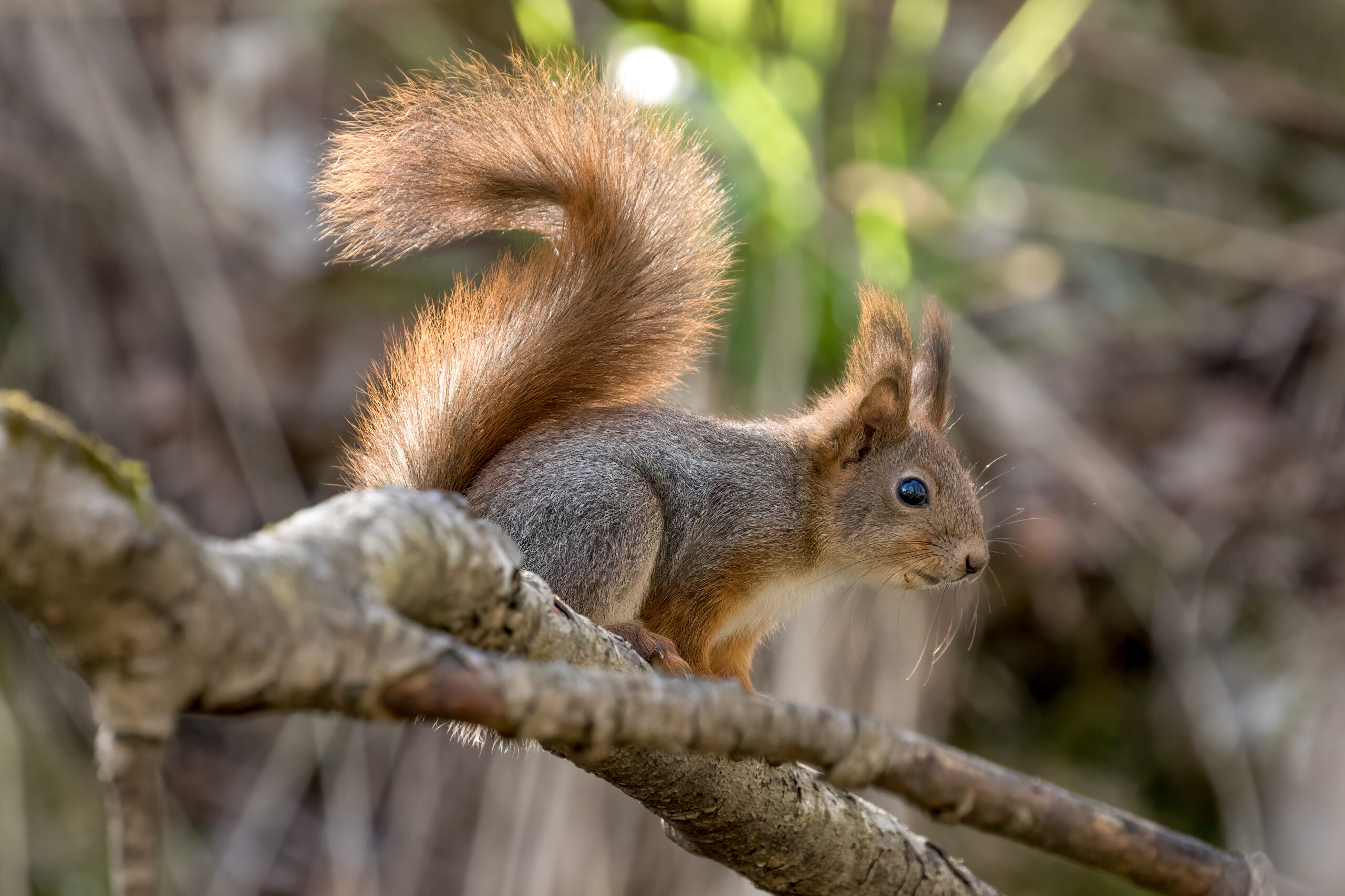Description
The Indian palm squirrel (Funambulus palmarum), also known as the three-striped palm squirrel, is a species of squirrel native to India and Sri Lanka. It is easily recognized by the three distinct white stripes running from head to tail on its back, contrasting with its greyish-brown fur. The Indian palm squirrel typically measures about 20 cm (7.9 in) in length, with a tail that is nearly the same length as its body. It weighs around 100 grams (3.5 oz). It is similar to the northern palm squirrel (Funambulus pennantii), which overlaps with the Indian palm squirrel in Central India, but the northern palm squirrel has five white stripes on its back and not three.
Diet & habitat
Indian palm squirrels are highly adaptable and thrive in a variety of habitats, including urban areas, gardens, forests, and agricultural lands. They are omnivorous, with a diet comprising fruits, nuts, seeds, insects, and small vertebrates. These squirrels are known for their dexterous foraging behavior, often seen climbing trees and buildings to access food. They have also adapted to feeding on human-provided food sources in urban environments.
Behavior
Indian palm squirrels are diurnal and highly active, especially during the cooler parts of the day. They are known for their agility and quick movements, often making short, sharp calls to communicate. Socially, they can be quite territorial and may display aggressive behaviors to defend their home ranges. Despite this, they are also seen in loose aggregations, especially where food sources are abundant.
Reproduction
The breeding season for the Indian palm squirrel occurs mainly in the spring and autumn. Female squirrels typically give birth to two to three litters per year, with each litter consisting of two to four young. The gestation period is about 34 days. After birth, the young are cared for in a nest made of leaves and twigs, usually located in a tree or a sheltered area. The mother provides extensive parental care until the young are weaned and ready to fend for themselves. The life expectancy of the Indian palm squirrel in the wild is approximately two to three years, although they can live longer in captivity.
Status
The Indian palm squirrel is classified as least concern by the IUCN Red List. It is not currently considered threatened due to its adaptability to a wide range of habitats, including urban environments.









